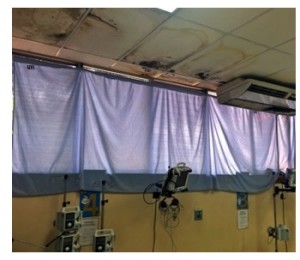Old vs. New vs. How Good We Have It
- Post By: Greg Crumpton
- Date:
- Category: Blog
- Tags: #LifeLongLearning, Atom Power, Ebullient Cooling, Excellence, greg crumpton, teamwork

I just returned from a trip to Guatemala, where I studied the Mayan Ruins pretty diligently and it really made me think about the engineering and construction feats accomplished during the building of these ancient cities.
As I juxtaposed those thoughts of manual labor, working the limestone quarries, moving stones so large in size, so heavy in weight it seemed impossible, not to mention feeding all the workers, against the advances in technology that I am witnessing first-hand with Atom Power, Ebullient Cooling and Service Logic, I experienced an extreme shot of adrenaline to the grey matter between my ears.
My understanding was deepened by Erica, my tour guide. No, not Erica as a female name, but Eric with a silent a. It turns out his Guatemalan parents knew of Erik Estrada from CHiP’s, the American TV show about motorcycle-based State Troopers in California. They thought of the man’s name more like “Erica Strada vs. Erik Estrada”. It’s the little things that matter… always!
Eric taught me about the incredible history of the region, the people, and the culture. He also took me to his house, let me snooze in his hammock, allowed me the privilege of sitting with his family at the dinner table and to see how they did homework and school projects as a family.
He is far more than a tour guide, he’s one heck of a role model for being a good and engaged parent and ambassador for his people. I am proud to now call him my friend.
OK, now back to the juxtaposition stuff. I saw wooden lintels that were cut and laid in place in the year 20 or so AD, and then I see an advertisement back here in the US that says termites are still a huge issue with destroying wood. Obviously, the Mayans knew something about wood preservation that modern day chemists could use.
The temples of Tikal, some rising hundreds of feet into the air, are yet another form of engineering genius, and still amaze the constructors and engineers of today. Same deal with the Egyptian pyramids. Did they build them that tall or did they excavate the surrounding dirt after the structure was built at the original ground level? We, as a people, are still pondering that.
On the flip side, we visited a local hospital to provide a team of contractors and hospital staff with some ideas and technological know-how on installing and upgrading the HVAC systems within the Neo-Natal ICU clinics. These places need a lot of help, see the image here of the adult area of the ICU, yes, that is actively growing, black mold on the ceiling! It has been proven that conditioning these areas of the clinics makes the survival rate of these babies soar, as bacteria doesn’t grow as well as it will in an non-conditioned area. If you want to support this effort, you can do so by donating to The Heineman Foundation.
After spending ten days in arguably one of the poorest countries, at least in Central America, then coming home to the incessant whining of politicians and people, who seem to not know how good we have it, is an ever present reminder to stay grounded.
We do, for the most part, have access to good water, sanitary sewer systems and a solid education program. These things are not a “given” everywhere. We simply sometimes fail to remember to be grateful we live in America.
What does all of this mean? We are living in ultra-fast, right now, and in the United States’ case, very clean, safe and predictable conditions. Don’t allow the super-cool technology stuff, the things I love for sure, to take over your brain.
Keep yourself thinking positively, about how to do more with less, donate a few bucks for a cause you believe in, or simply do a kind thing for someone. Just get out of the box that your lizard brain wants to keep you in and discover some people, places and things.
Until next time,
Stay Malleable!
Leave a Reply
You must be logged in to post a comment.